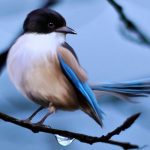The Cre-Eight
Catherine Tillman came up with a process to develop and heighten one’s personal creativity, and wrote about it in her Masters Thesis at the International Center for Studies in Creativity, SUNY Buffalo State. She calls her process “The Cre-Eight”. I found her idea worth spreading, and so here goes…
Modeled on Stephen R. Covey’s, The Seven Habits of Highly Effective People, Catherine Tillman asks “how do we sharpen our creativity saws in a similar kind of balanced program, so that we can continue to develop our creative thinking skills and serve as catalysts for creative change; and how can we continuously renew these skills?”
She organizes activities under the four major categories suggested by Covey’s program for self-renewal.
Physical
Activity #1: Engage in aerobic exercise for 30 minutes at least two times a week.
Why: Research suggests exercise can boost your intellectual horsepower.
“During the two-hour period following aerobic exercise, alpha and theta brain wave activity are increased in the prefrontal cortex, which makes it easier to access the receptive part of the brain that allows you to absorb information non-judgmentally (p. 74). Carson suggested, therefore, that the two hours after aerobic exercise are a good time to reflect on an open-ended problem or creative challenge.”
Activity #2: Take a nap, and get a good night’s sleep
Why: If you sleep well, you think well
Get plenty of sleep. Tillman references John Medina’s book Brain Rules, in which he explains “that the brain never sleeps; in fact, it displays greater rhythmical activity during sleep than when it is awake (p. 152). Medina’s research concluded that ‘sleep loss means mind loss…and cripples thinking in just about every way you can measure thinking. Sleep loss hurts attention, executive function, immediate memory, working memory, mood, quantitative skills, logical reasoning ability, and general math knowledge’ (p. 163).”
Social/Emotional
Activity #3: Choose specific techniques to handle self-doubt, setbacks, and criticism
Why: Creativity involves resilience and risk-taking, including the risk of rejection
“Establishing ways to move through the inevitable chaos of creativity, and having tools to handle the criticism of our creative endeavors, is likely to increase our chances of being continuously creative.” Techniques for dealing with uncertainty:
Develop a Growth Mindset
What people believe shapes what they achieve, and that people can have either a “fixed mindset,” the belief that our abilities are set in stone and cannot really change, or a “growth mindset,” the belief that our abilities can and do change throughout our lives. –Carol Dweck, Mindset (p. 9)
Use Heuristics
These are mottoes or open directions for living that call you to new ways of behaving. For example, heuristics for diminishing the internal voice of judgement (VOJ) include “Destroy Judgement, Create Curiosity,” and “Say Hello and Then Goodbye to your VOJ”. –Michael Ray, The Highest Goal (2005)
Follow Carson’s Rules
Tillman includes a set of rules from Harvard University psychologist Shelley Carson for handling negative evaluation from others:
- If someone is criticizing you, it is a sgn you’ve done something to criticize. Congratulate yourself.
- Consider criticism to be valuable feedback.
- Do not defend yourself when criticized, and do not be pulled into battle by a hostile critic. (Once you defend your work, it’s harder to learn anything from information people are trying to give you.)
- Rephrase the main points of criticism. (Listen actively. Say: “It sounds like you think…is that right?”)
- Thank the person criticizing your work for their feedback.
- Determine the value of the criticism objectively. (Look for evidence for and against its validity.)
Activity #4: Join a group of like-minded creative people, or start your own group
Why: The happiest people are the most connected; happy people are more creative
Being happy:
- stimulates the growth of nerve connections
- improves cognition by increasing mental productivity
- improves your ability to analyze and think
- affects your view of surroundings
- increases attentiveness
- leads to more happy thoughts
Mental
Activity #5: Adopt an attitude of mindfulness by noticing new things
Why: Creativity is related to making associations; the more you notice, the richer your associational treasure chest
I best understand this activity as engaging as a traveler. If you were to pretend your neighborhood was, say, in Italy, how would you look at it differently. You would probably focus your attention differently, be curious, open, and accepting. These are qualities described in Dr. Dan Siegel’s book The Mindful Brain as mindfulness.
“Dr. Ellen Langer, who has dedicated four decades to the study of mindfulness, described the essence of cognitive mindfulness as ‘making mindful distinctions,’ that is, noticing new things and being open to new perspectives and information. She argued that we become trapped in old mindsets and automatic behaviors that come from single-perspective thinking, and that when we open ourselves to viewing everything from a variety of perspectives, we open our minds to new possibilities.”
I believe travel mindset, be it virtual, is a great trick to get one’s head into this space.
Activity #6: Immerse yourself in a hobby or interest that is completely different than any of your other interests
Why: Creativity often arises from taking ideas in one field and transferring them to another
“Everyone can draw connections between an amateur avocation and a professional vocation. And they should, for the practical payoff is tremendous. Recent studies have found that the best predictor of career success in any field is not IQ, grades or standardized test scores, but participation in one or more mentally intensive leisure time activities or hobbies. –Robert S. Root-Bernstein, Michele M. Root-Bernstein 1999, Sparks of Genius (p. 132)
Spiritual
Activity #7: Spend time in nature
Why: Natural beauty inspires creativity
“Spending time in the mountains, at the beach, looking at the stars, or watching a beautiful sunset releases endorphins in the brain that contribute to the upswing mood that generates creativity (Carson, 2010, p. 140)”.
Activity #8: Think of life as a grand adventure and yourself a creative explorer; focus on the journey rather than the destination
Why: Explorers have personality characteristics of creative people; preoccupation with outcome can make us mindless (Langer, 1989, p.75)
“Langer (2005) suggested that when we think of uncertainty as a problem to be overcome, this is what leads us to “accept prepackaged choices rather than deal with the unbounded set of possibilities” (p.223).” Tillman recommends to embrace uncertainty, to look on each day with curiosity, to let go of old mindsets and work out assumptions, and to constantly question the choices we are given. And if we know that nothing is certain, we open ourselves to let in whatever might be emerging.
Tillman summarizes her study describing her process as intended to guide, not govern. While not an exhaustive list, it is based on science and meant to provide a jumping-off point for those interested in continuing to enhance and develop their natural creative abilities.




